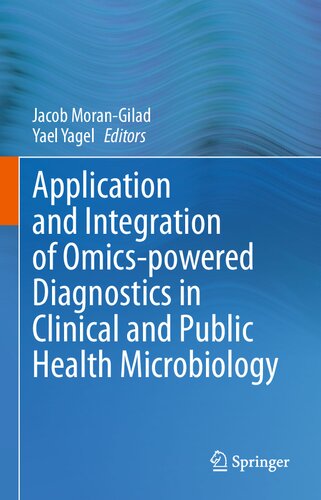

Most ebook files are in PDF format, so you can easily read them using various software such as Foxit Reader or directly on the Google Chrome browser.
Some ebook files are released by publishers in other formats such as .awz, .mobi, .epub, .fb2, etc. You may need to install specific software to read these formats on mobile/PC, such as Calibre.
Please read the tutorial at this link: https://ebookbell.com/faq
We offer FREE conversion to the popular formats you request; however, this may take some time. Therefore, right after payment, please email us, and we will try to provide the service as quickly as possible.
For some exceptional file formats or broken links (if any), please refrain from opening any disputes. Instead, email us first, and we will try to assist within a maximum of 6 hours.
EbookBell Team

4.7
46 reviewsVarious “omics” methods have recently revolutionized molecular diagnostics. Next-generation sequencing (NGS) makes it possible to sequence a human genome in just one day. Whole genome sequencing (WGS) greatly improves the ability to investigate the outbreaks of numerous pathogens. Metagenomics helps to analyze the microbiome, which aids greatly in identifying the pathogenesis of infectious diseases. Proteomic-based methods, namely matrix-assisted laser desorption-ionization time of flight mass spectrometry (MALDI-TOF-MS), have a promising role in identifying myctobacteria and fungi, and predicting antimicrobial resistance.
While there are numerous scientific publications on “omics” applications for microbiology, there are relatively few books that review this topic from a clinical diagnostics perspective. This book looks at this field from a holistic viewpoint, instead of limiting by type of “omics” technology, in order to cover the body of knowledge needed for practitioners and academics interested in clinical and public health microbiology. Additionally, it addresses the management, economical, regulatory and operational aspects of integrating these technologies into routine diagnostics.